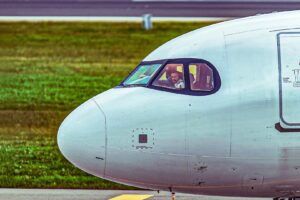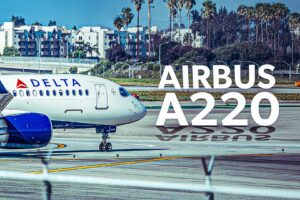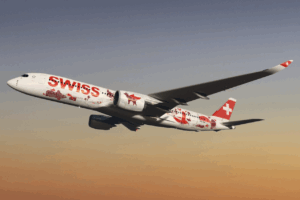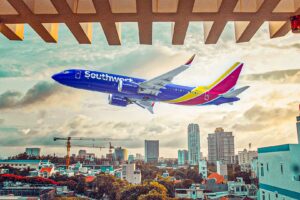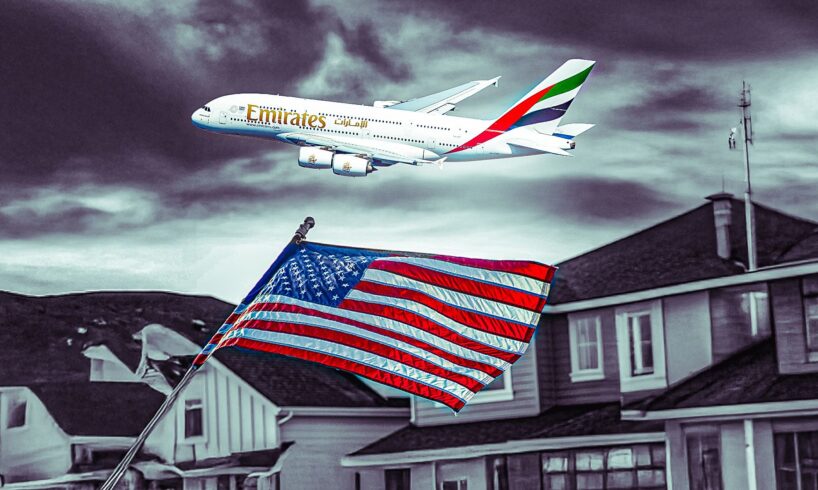
The UAE flag carrier Emirates is the world’s largest operator of the Airbus A380, with more than 100 of the double-deckers in its fleet. It was the second airline to take the delivery of the aircraft, after Singapore Airlines, and introduced the type on a scheduled service between Dubai International Airport (DXB) and New York John F. Kennedy Airport (JFK) in August 2008.
Over the past 17 years, the superjumbos have become the backbone of the airline’s long-haul operations and are deployed on major intercontinental routes from its Dubai hub. Today, Emirates continues to deploy the A380 on some of its busiest and premium long-haul routes where high capacity demand justifies the type’s scale. These include major city pairs like Dubai–London Heathrow, Dubai–Sydney, Dubai–Bangkok, and Dubai–New York JFK, among others.
The United States remains one of the carrier’s most strategically important markets. It has maintained a strong presence in the country for over two decades and continues to see it as a growth market, both in terms of traffic volumes and network opportunities. While many global airlines have moved their A380s to traditional trunk routes, the Dubai-based airline continues to operate the double-deckers to several US cities where few, if any, other carriers use the aircraft.
Standalone A380 Route To Houston
Photo: Vytautas Kielaitis | Shutterstock
One of the most notable deployments is the Dubai–Houston Intercontinental route, which remains a daily exclusive A380 service in the market that no longer sees regular superjumbo operations from other airlines. Emirates initially launched flights to Houston in 2007 using the Boeing 777-200LR, but the city did not see A380 service until December 2014.
At the time, it became the second carrier to operate the double-decker to Houston, after Lufthansa, which had introduced the type there in 2012. It is worth noting that it has not been a case of the continuous use of A380 service on the route. The airline downgauged the service to a 777-300ER between July 2016 and May 2018 and again during the COVID-19 Pandemic.
Washington Dulles Route: A Strategic A380 Upgauge
Another notable route is to Washington Dulles Airport (IAD), where Emirates has maintained a strong presence for over a decade. It launched service to the US capital in September 2012 with the Boeing 777-200LR (later switching to the 777-300ER) and deployed the first A380 on the route in February 2016. The widebody remained on the route until March 2020, with intermittent use during the pandemic period. In 2023, the airline hinted that it would remove the type permanently from the route, but re-entered it later in 2024.
Notably, the A380 upgauge followed a major shift in the market: United Airlines, Emirates’ main competitor on the Washington–Dubai route, withdrew from the city pair in January 2016. That year, the U.S. General Services Administration awarded the City Pair Program contract for official government travel on the route to JetBlue. Although JetBlue does not operate flights to Dubai, it fulfilled the contract through its codeshare agreement with Emirates.
United strongly opposed that, and said that the “decision violates the intent of the Fly America Act.” This ultimately left a capacity gap on the route, which Emirates capitalized on and started deploying the A380s to absorb the displaced demand. Today, it is one of only a few airlines operating the A380 at Dulles, alongside British Airways and Lufthansa.
A Rare Fifth Freedom A380 Route: Emirates Between Milan & New York
Photo: kamilpetran | Shutterstock
Now, this may not be an unusual destination for Emirates, but its A380 service between Milan Malpensa Airport (MXP) and New York JFK is unlike any other in the US market. The fifth freedom route was launched nearly a decade ago using the Boeing 777 and has grown steadily in both commercial relevance and passenger volume.
As demand increased, Emirates upgauged the service to the A380, offering a high-capacity premium product on a route operated entirely outside its home market. The aircraft was temporarily swapped for the 777 during the pandemic but later reintroduced, with a daily A380 rotation now in place.
The Milan–JFK link has played a notable role in supporting trade and tourism between Italy and the United States, two markets underserved by direct premium capacity. In addition to this pairing, Emirates also operates A380 flights to New York JFK, Los Angeles (LAX), and San Francisco (SFO), which remain competitive and high-volume markets served by other carriers using the type.
Related
Emirates’ Airbus A380s No Longer Fly To These 24 Destinations
They include two US airports.
Emirates’ US Flights Are Nearly Evenly Split Between A380s And 777s
Photo: MBekir | Shutterstock
The airline launched its first US service back in 2004 with an inaugural flight to New York JFK and has since expanded to 12 destinations across the country. These include Boston, Los Angeles, Houston, Chicago, Washington D.C., Seattle, Newark, Orlando, Dallas-Fort Worth, San Francisco, and Miami. This network remains entirely served by its fleet of A380s and 777s.
Schedule data from an aviation analytics firm, Cirium, shows that the Dubai-based airline is set to operate a total of 5,371 flights to US cities in 2025, with a near-even split between the two aircraft types. Of these, 2,555 flights will be operated using the A380, offering more than 1.2 million seats. The remaining 2,816 services will use the Boeing 777-300ER, and will offer less capacity compared to double-deckers, around 934,346 seats.
According to ch-aviation, Emirates currently operates 118 A380s and 123 Boeing 777s, with additional widebody capacity on the way. Its future fleet includes orders for eight Airbus A350-900s, 205 Boeing 777X aircraft, and 30 787s (comprising 787-10 and -8 variants). The 777X aircraft are expected to replace older A380s as they reach the end of their service life.


